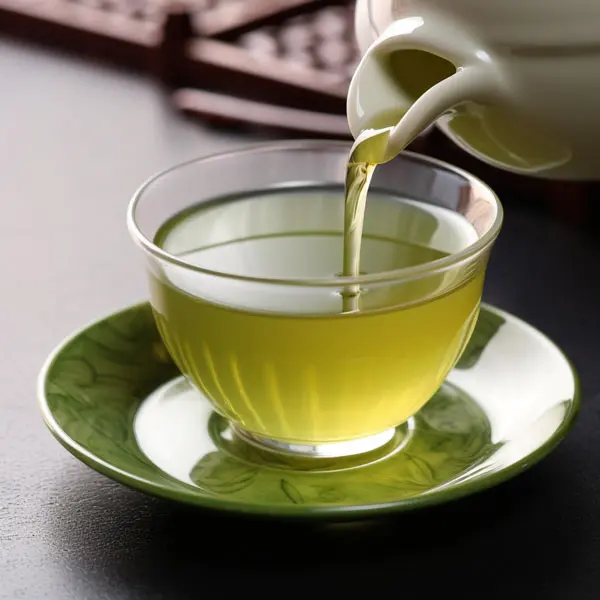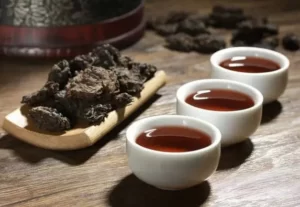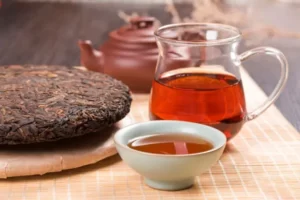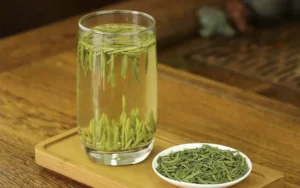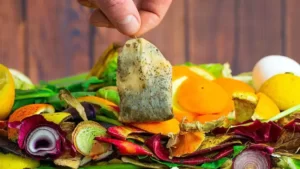Introduction
Imagine holding a piece of history in your hands: an artistic masterpiece, as delicate as it is robust, hailing from the ancient Chinese city of Yixing in Jiangsu province. This is the Yixing clay pot, a typical Chinese tea set crafted from the unique Yixing purple clay found exclusively in Dingshu Town. Over the years, these remarkable artifacts have surged in value and prestige due to their artistic allure and the dwindling availability of this exclusive clay.
But what exactly is a real Yixing purple clay teapot? In a market flooded with counterfeits, this question is being raised more frequently.
Today, I will tell you how to distinguish a real Yixing purple clay teapot from three perspectives: clay material, craftsmanship, and fake yixing teapots.
The Clay Material of Real Yixing Clay Pots
Benshan (local) Clay and Waishan (foreign) Clay
In the purple clay industry, Yixing zisha clay from Huanglong Mountain in Dingshu Town, Yixing City, is commonly referred to as Benshan clay. Once it leaves this region, such as clay from Anhui, Zhejiang, etc., it is referred to as Waishan clay. Many people will use a magnifying glass to observe the granular texture on the surface of the teapot, but non-experts absolutely cannot tell the difference. To distinguish a Yixing teapot, we have to start with the clay material.
To ensure authenticity, genuine purple clay must primarily be composed of Benshan clay. If it is Waishan clay, or even from Huzhou, Zhejiang Province, which is in close proximity to Yixing, it cannot be strictly referred to as Zisha, it is merely classified as pottery. Generally, pottery clay lacks breathability.
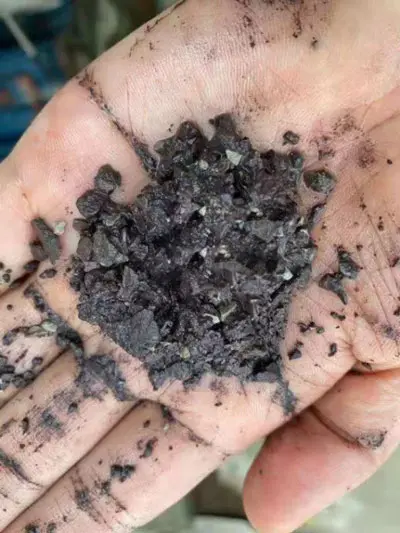
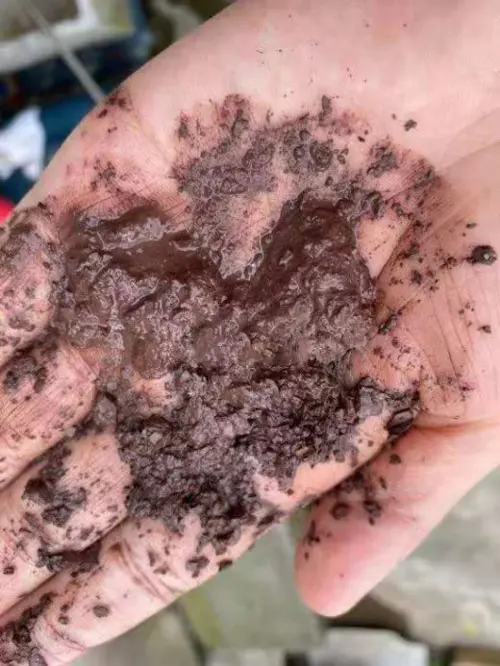
The difference between Benshan clay and Waishan clay is quite large. Sometimes you might not be able to tell from the appearance, but during actual use, Benshan clay changes very quickly (the better the clay, the faster the change). Just by opening and cleaning the teapot a bit, it immediately becomes lustrous. In comparison, teapots made from Waishan clay seem dry. Although they can develop a patina, it takes a very long time, half a year or even one to two years, and then there is only a slight change.
Therefore, the differences in breathability and oiliness between real and fake purple clay teapots are enormous. So if you buy Waishan clay, you are essentially just buying a teapot that resembles a purple clay teapot, but is not a real purple clay teapot.
Why should we use real purple clay?
First, the trace elements in real purple clay are very beneficial to human health.
Second, real purple clay is easy to maintain and becomes more beautiful with use.
Finally, the clay for real purple clay is extremely scarce, so purple clay teapots have the function of maintaining and appreciating in value.
Characteristics of Benshan Clay
What are the features that create such a significant difference between Benshan clay and Waishan clay?
Yixing Benshan clay was formed during the Devonian period of the Paleozoic era about 350 million years ago. After undergoing deep weathering and water action, it has developed fully. Compared with Waishan clay from Zhejiang, Anhui, etc., which emerged 80 million years later, Benshan clay is “older” in local Yixing terms. It is precisely this “old” characteristic that has endowed Benshan clay with the following advantages:
- Strong Breathability
The breathability of Benshan clay is unmatched by ordinary pottery from other provinces. This is because Benshan clay has a double pore structure, and its pores are gaps formed between the original granules. No matter how weathered or old, the interior is filled with dense granules, which correspond to excellent breathability. In contrast, Waishan clay has a lot of impurities mixed within the granules. These impurities will block the pores, resulting in almost no breathability.
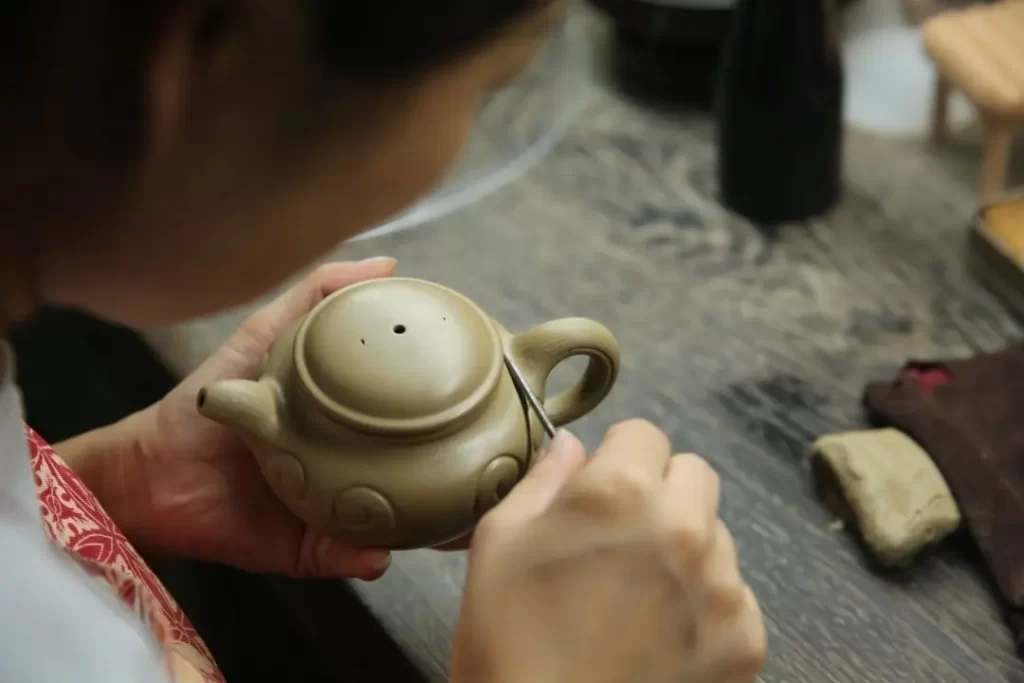
This is why pots made from Benshan clay, when sprayed with water on the greenware, are quickly absorbed dry, while pots made from Waishan clay, after being sprayed with water, have moisture floating on the surface of the greenware, which takes a long time to dry. So another characteristic of genuine ore clay is that it is more difficult to work with and can’t be mastered by ordinary people. Because it dries faster, if your hand speed is slightly slower, defects will easily occur. So the scrap rate of handmade purple clay teapots is also relatively high. Because the clay is scarce and the scrap rate is high, Yixing purple clay teapots are expensive.
Using Benshan clay, you can add nothing. We only need to grind it into powder and add a little water, and then put it in a warehouse to age. After a while, it can be used to make a teapot. This method is especially easy for glazing because nothing has been added, like barium carbonate, which is used to stabilize these elements.
There is another point that only experienced Yixing masters know. When Benshan clay is ground into very small particles, it still retains its original granular shape; while Waishan clay becomes flaky, and a large amount of sand is mixed in, which blocks the pores.
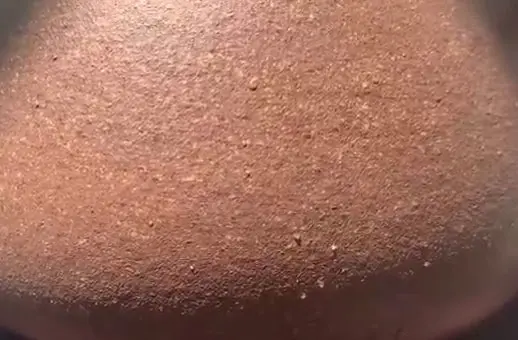
- Rich in Oily Feeling
Benshan clay has a rich oily feeling, which is manifested by the rapid formation of a patina on the teapot after brewing.
The deeper the clay is buried, the stronger the oily feeling, and there is a significant difference between surface clay and deep well clay. Why is this so? Because the surface clay has more impurities, which makes its purity not very high, so the teapot made from it needs to go through a series of treatments such as acid washing. But deep well ore is buried deep underground and has been soaked by groundwater for a long time (even up to hundreds of millions of years). Its appearance is as crystalline and shiny as the inside of a shell, and it is rich in oiliness. Surface clay falls short in this regard. As for Waishan clay, it is generally dry and the glaze is mostly not shiny, and oily feeling is very rare.
Here we take a teapot made of deep well ore as an example.


Upon close observation, you will find that its oily feeling is quite different. Because the clay itself is of high quality and has a strong oily feeling, and it is further enhanced by aging, so the maintenance effect is very obvious with just a little effort.
If you want to buy a Yixing clay pot for long-term use, try not to buy Waishan clay. Although the surface of some Waishan clay will become shiny after soaking a few times, it will come off after washing, while the real oily feeling cannot be washed off.
The Crafting Process of Authentic Zisha (Purple Sand)
Fully Handmade and Semi-handmade
Apart from the clay being sourced from the local area, another crucial aspect is the crafting process. The traditional crafting methods in Yixing, the birthplace of Zisha, are primarily divided into two types: fully handmade and semi-handmade.
Fully handmade refers to the method of forming the pot by patting the body, kneading the handle, connecting the various parts, and finally refining them into a pot embryo. On the other hand, the semi-handmade method involves shaping the body with a mold after the initial patting process. Regardless of whether it’s fully or semi-handmade, tools are necessary to complete the process. Compared to the fully handmade method, semi-handmade, due to the involvement of molds, tends to produce pots of more uniform size and proportions.
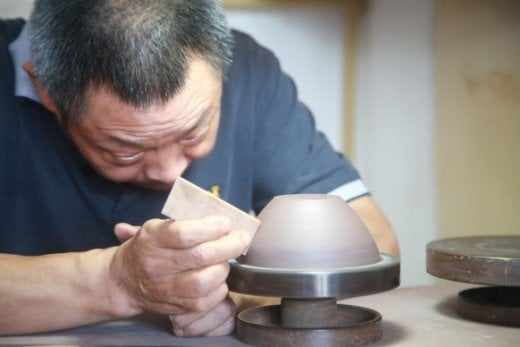
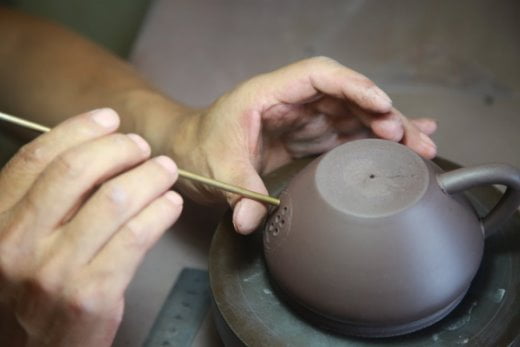
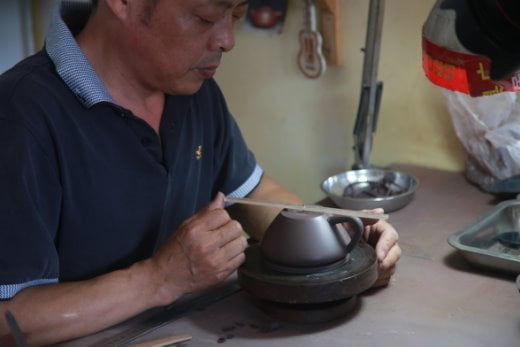
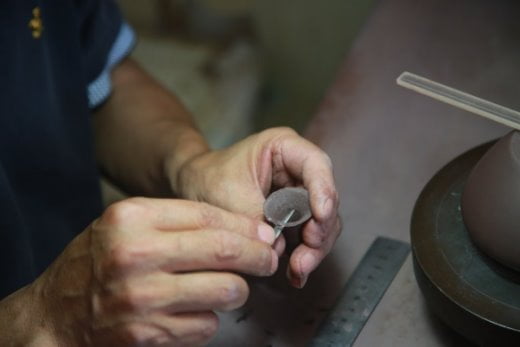
The type of craftsmanship – fully handmade or semi-handmade – does not affect the quality of the tea brewed in the teapot. It will not make the tea more aromatic if it was entirely handcrafted. The difference lies in the price; fully handmade pots are more labor-intensive and challenging to make, thus typically more expensive. Semi-handmade pots, which are easier to craft and more efficient to produce, are cheaper. For instance, if a fully handmade Yixing clay pot takes two days to complete, a semi-handmade pot can be finished in a day, making it more cost-effective.

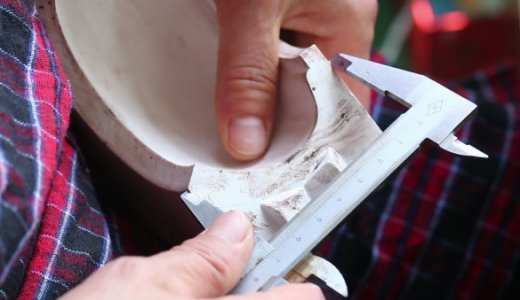

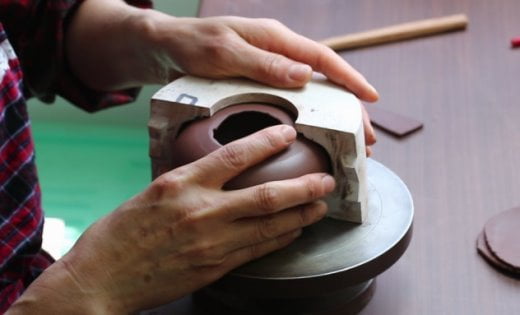
Therefore, if you simply regard the Yixing clay pot as a tool for brewing tea, you should focus on the quality of the clay and whether the price is within your budget, rather than whether it is fully or semi-handmade. If you are interested in buying a fully handmade Yixing clay pot, you can read my article on how to distinguish between fully and semi-handmade Zisha teapots.
When purchasing a Yixing clay pot, it is not recommended to chase after fully handmade products blindly, which may lead you to buy pots made from inferior clay sourced outside the local area. Equally, it is not advisable to solely chase after low prices and buy teapots made with techniques other than fully or semi-handmade. Below are the types of counterfeit Zisha teapots you should avoid:
Types of Counterfeit Zisha Teapots
Chemical Pot
Avoid buying chemical pots, which have color additives. Health risks aside, the unnatural color is a dead giveaway. Pots with unnaturally vibrant colors, such as sky-blue clay, dark-green clay, and crimson robe clay, are most often counterfeits. However, even golden-section clay has its counterfeits now.
Teapots depicted in the images are chemical pots. Typically, they emit a pungent smell and display abnormal colors. Brightly colored clays, like crimson robe and sky-blue clay, are particularly prone to producing chemical pots.

As for the counterfeit golden-section clay, it often presents a pure color with no black particles due to added carbon dioxide. When selecting a Yixing clay pot, don’t worry about the presence of mineral substances (the black spots). These are characteristic of natural ores and should not be seen as defects, much like the spots on human skin that add to its natural beauty.
Slip-Casted Teapots
Slip-casted teapots are noticeably more vibrant than traditional Zisha (purple clay) teapots. The slip-casting technique is most commonly used in Jingdezhen, where craftsmen place prepared clay on a wheel, which is then shaped into certain dimensions and forms.
To create a Yixing clay pot using the slip-casting method, the Zisha clay must be transformed into a very thin slurry. Pure Yixing clay pot cannot be slip-casted, if the particles of the clay are larger than 100 mesh, there will be no granularity, and it will lose its permeability. This presents an issue, as the vast majority of slip-casted teapots on the market—99.99%, to be exact—are made from inferior clay mixed with kaolin. Because the difference is hard to discern with the naked eye, these are often sold as high-quality handmade products. Slip-casting is essentially a production-line job and is quite low in cost.
The most common types of slip-casted teapots on the market are the Xishi, Shipiao, and Dezhong models. Why are these types so prevalent? The simpler the shape, the harder it is to produce. For example, the lid of a Xishi pot can easily be uneven when handmade, but slip-casting ensures a uniform thickness that novice buyers may not notice.

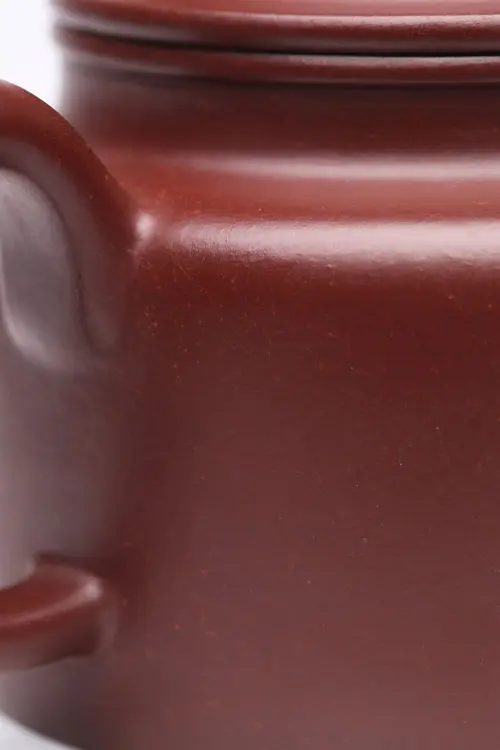
Machine-Made Teapots
Aside from slip-casted teapots, machine-made teapots represent another large category of imitation Zisha pots saturating the market. The image below is of a machine-made teapot.
Machine-made teapots are those produced with machines throughout the entire process. In the past, machine-made pots were common for round vessels, but with technological advancements, square vessels can also be created by machines.
Machine-made teapots rarely use high-quality clay. Instead, water or kerosene is often added to the pre-mixed clay, and a single pot is produced with each operation of the machine, resulting in a rapid output. Statistics show that a machine-made teapot workshop, with two rolling machines and a few workers, can produce around 300 teapots per day. Currently, due to market confusion, machine-made and slip-casted teapots dominate the low-cost segment. Beginners often cannot distinguish these types and only see that their prices are significantly lower than similar products sold on the market.
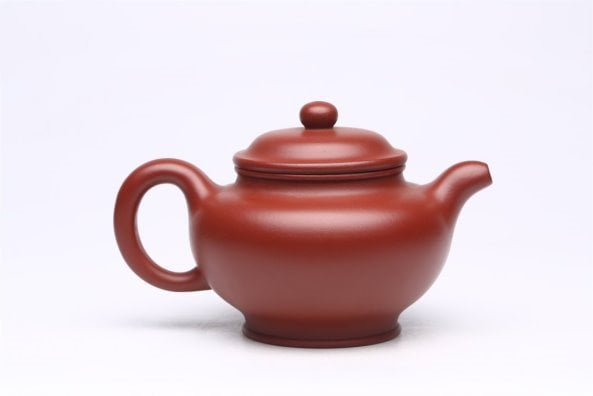
In fact, whether the Yixing clay pots are machine-made or slip-casted, they cannot truly be classified as Zisha. The shaping processes they use are not suitable for Zisha teapots. If the slip-casting technique is used, the Zisha clay must be made into a slurry. Since the slurry is very thin and mixed with other materials, it loses its permeability and is no longer Zisha material. As for machine-made Yixing clay pot, even though they are assembled by hand, the process doesn’t involve the beating of the pot body. If substandard clay is used, it’s not considered a Zisha pot but more of a Zisha-like pot. If tea is kept in such a teapot, it will not last overnight; it will go bad by midnight.
A purchased Zisha teapot that is neither handmade nor made from native clay has little value, regardless of how cheap it is. It simply does not do justice to good tea.
Slip-Casted Moulded Teapots
Apart from machine-made and slip-casted teapots, another type is the slip-casted moulded teapot.
Slip-casting is a method that utilizes the water-absorbing nature of plaster. Clay slurry containing paraffin is heated and poured into a plaster mold. After cooling, the plaster mold is removed, revealing the teapot body. The spout and handle are then attached, and the teapot is processed and decorated. One person can cast 300 to 500 of these teapots in a day.
Due to their low cost and ability to meet the demands of the tea art market, these types of pots are commonly found at major tourist spots and often feature computer-engraved characters.
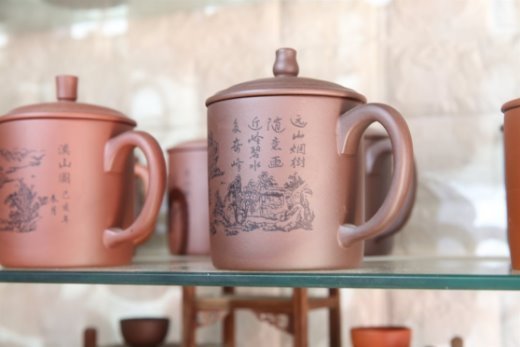
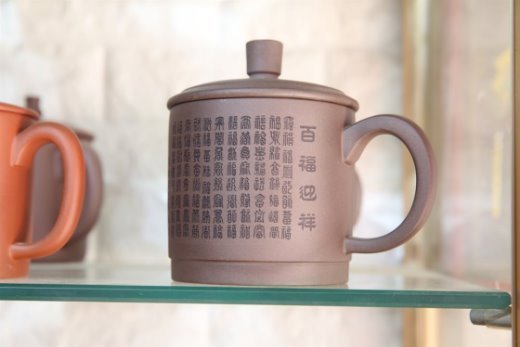
Typically, the more complex the pot shape and lines, the higher the likelihood of it being a slip-casted moulded teapot. This is because complex shapes and designs are hard to create by hand, even when partially using molds.
Although slip-casted moulded teapots may look appealing, they can pose health risks. To save on material costs, these teapots often contain “water glass” (a solution of sodium silicate commonly used in the construction industry as an adhesive and sealant), which is harmful.
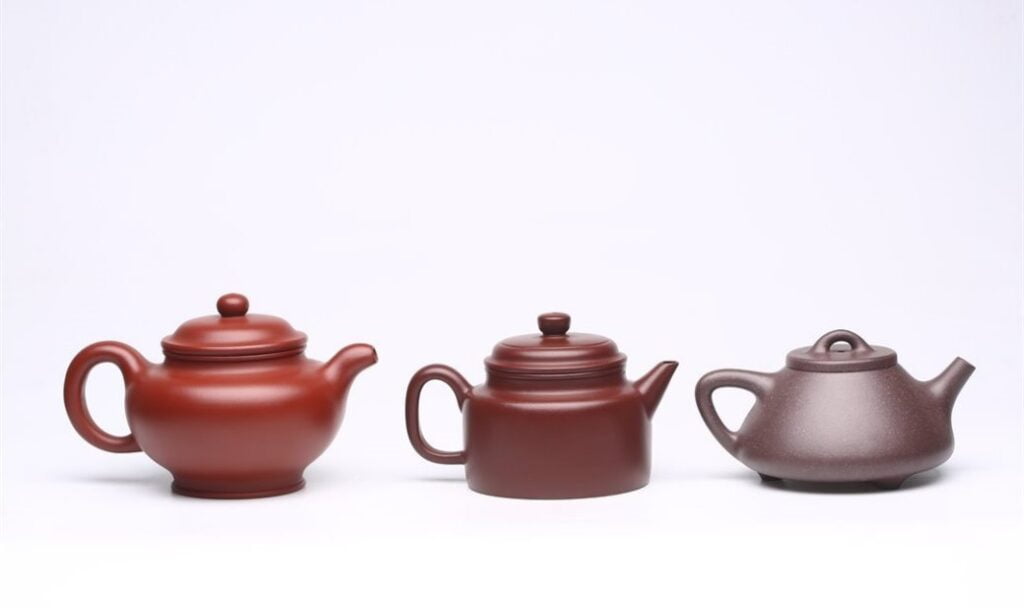
The quality of Yixing clay pot is hard to distinguish with the naked eye. Even experienced craftsmen need to use and experience the teapot to gauge its quality. However, it’s certain that a good clay teapot will show noticeable changes after only two or three uses. If a teapot doesn’t change, regardless of how much it is used over several months or even a year, its quality is likely poor. For beginners looking to buy a genuine Zisha teapot, it’s recommended to opt for entry-level ones in the $200-$300 range.
Conclusion
In conclusion, Yixing clay pots embody a rich heritage and hold immense value in the world of tea appreciation. With their unique craftsmanship and scarcity of genuine clay, these teapots have become highly sought after.
Distinguishing between real and counterfeit Yixing clay teapots is crucial to ensure an authentic and rewarding tea-drinking experience. By understanding the characteristics of Benshan clay, the craftsmanship involved, and the types of counterfeit teapots to avoid, enthusiasts can make informed purchasing decisions.
